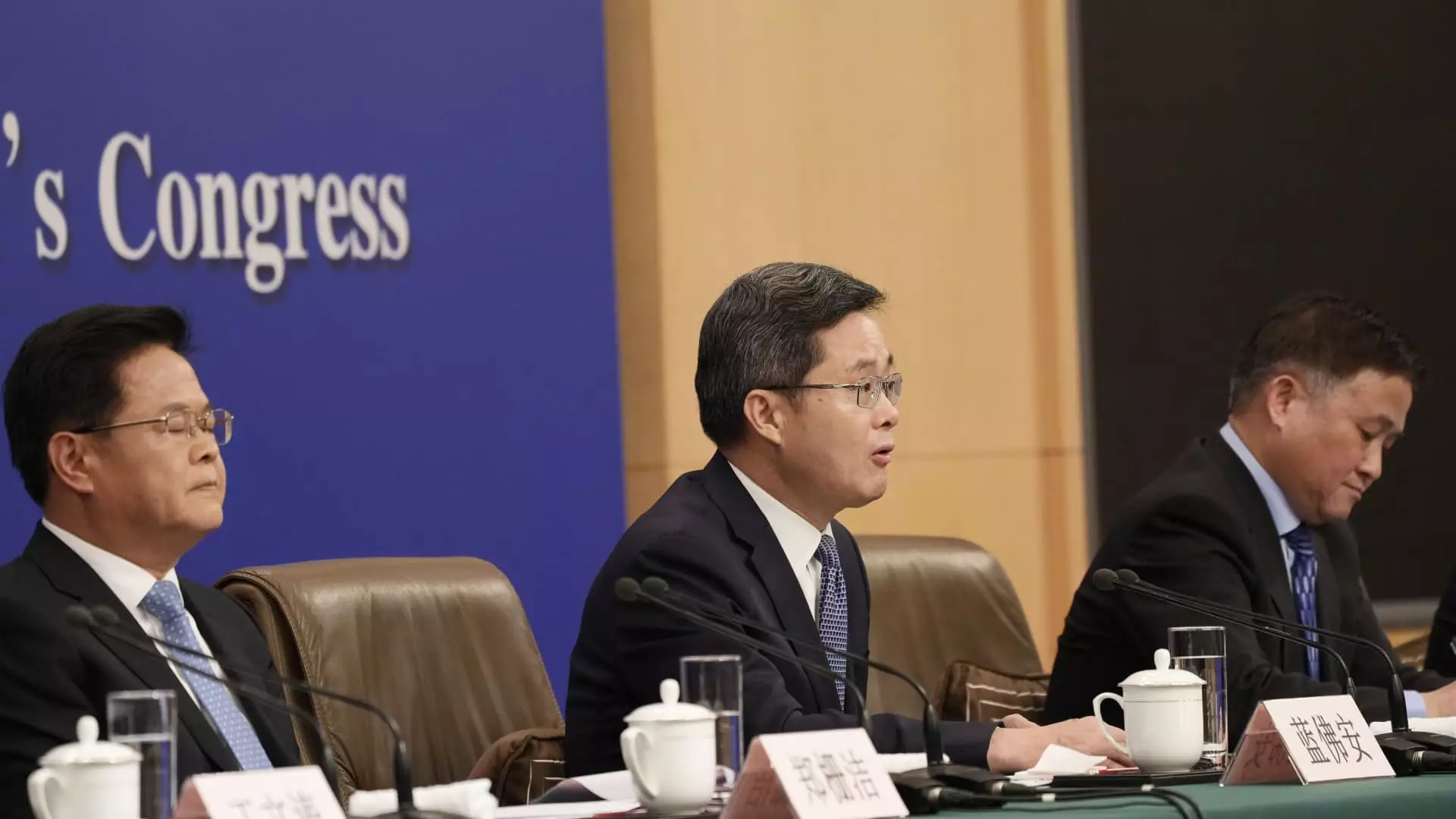As the global economy grapples with various challenges, China, the world’s second-largest economy, finds itself under the microscope. The recent announcement that Finance Minister Lan Fo’an will hold a press conference to discuss potential economic support measures has created waves of anticipation among economists, investors, and the general public. With China facing sluggish growth, a modest increase in retail sales, and a beleaguered real estate market, many are questioning whether the government will take definitive steps to stimulate the economy. The backdrop of high-level discussions led by President Xi Jinping further intensifies the spotlight on China’s economic strategies.
China’s economy is in need of decisive fiscal interventions. Despite calls for enhanced monetary and fiscal policy support in September, the specifics of such measures have been conspicuously absent. Economists estimate that China may require anywhere from 2 trillion yuan to over 10 trillion yuan in stimulus to effectively tackle its economic challenges. Such estimates reflect not only the urgency of the situation but also the complexities involved in executing a favorable economic turnaround. However, recent discussions highlighted the critical need for both the approval of this stimulus package by China’s parliament and the strategic allocation of funds to ensure sustainable growth.
Economic policies are not merely about the volume of funds injected into the economy; how those funds are utilized is equally critical. According to analysts, there is a genuine concern that stimulus measures may be used primarily to support struggling local governments, thereby stymying broader consumption-driven growth. The current trends in retail sales highlight a disturbing reality: growth has been tepid at best. Additionally, the persistent downturn in the real estate sector raises alarms regarding overall economic viability, prompting a closer examination of fiscal strategies going forward.
China’s Gross Domestic Product (GDP) growth rate of 5% during the first half of the year has raised doubts regarding fulfillment of the annual growth target set at around 5%. The upcoming release of third-quarter GDP figures by the National Bureau of Statistics on October 18 is imminent, and market participants are keenly aware that these figures could influence both policy direction and market sentiment considerably. This situation has led to volatility in mainland Chinese stocks, which had recently experienced a stimulus-induced rally; however, the momentum has since waned, returning major indexes to levels reminiscent of late September.
The volatile behavior of the Chinese stock market post-holiday illustrates the fragility of investor sentiment amidst uncertain fiscal policy. Following a weeklong break, market reactions oscillated as stakeholders digested implications of previous policy announcements. Following the U.S. Federal Reserve’s initiation of an easing cycle, the People’s Bank of China (PBOC) responded by cutting several interest rates and extending measures in the real estate sector, which were perceived as efforts to mitigate economic slowdown in China. Nevertheless, as the NDRC pledged to expedite the use of previously allocated funds, the absence of new stimulus announcements underscored the careful balancing act the government must perform in stimulating growth while managing risk.
As the date for the anticipated press conference draws near, many stakeholders are left pondering the efficacy and breadth of the announced fiscal measures. The intersection of domestic economic pressures, international market volatility, and internal policy approvals create a conundrum that requires astute navigation from China’s financial leaders. If the soon-to-be-discussed policies aim not only to address immediate financial shortfalls but also to foster long-term economic resilience, they could very well redefine China’s growth trajectory.
While the upcoming press conference led by Lan Fo’an holds promise for clarity and direction, it is the strategic execution of economic policies that will ultimately determine the effectiveness of China’s responses to its current fiscal challenges. The world watches closely, keen to see how China will steer its vast economic machinery in these trying times.

